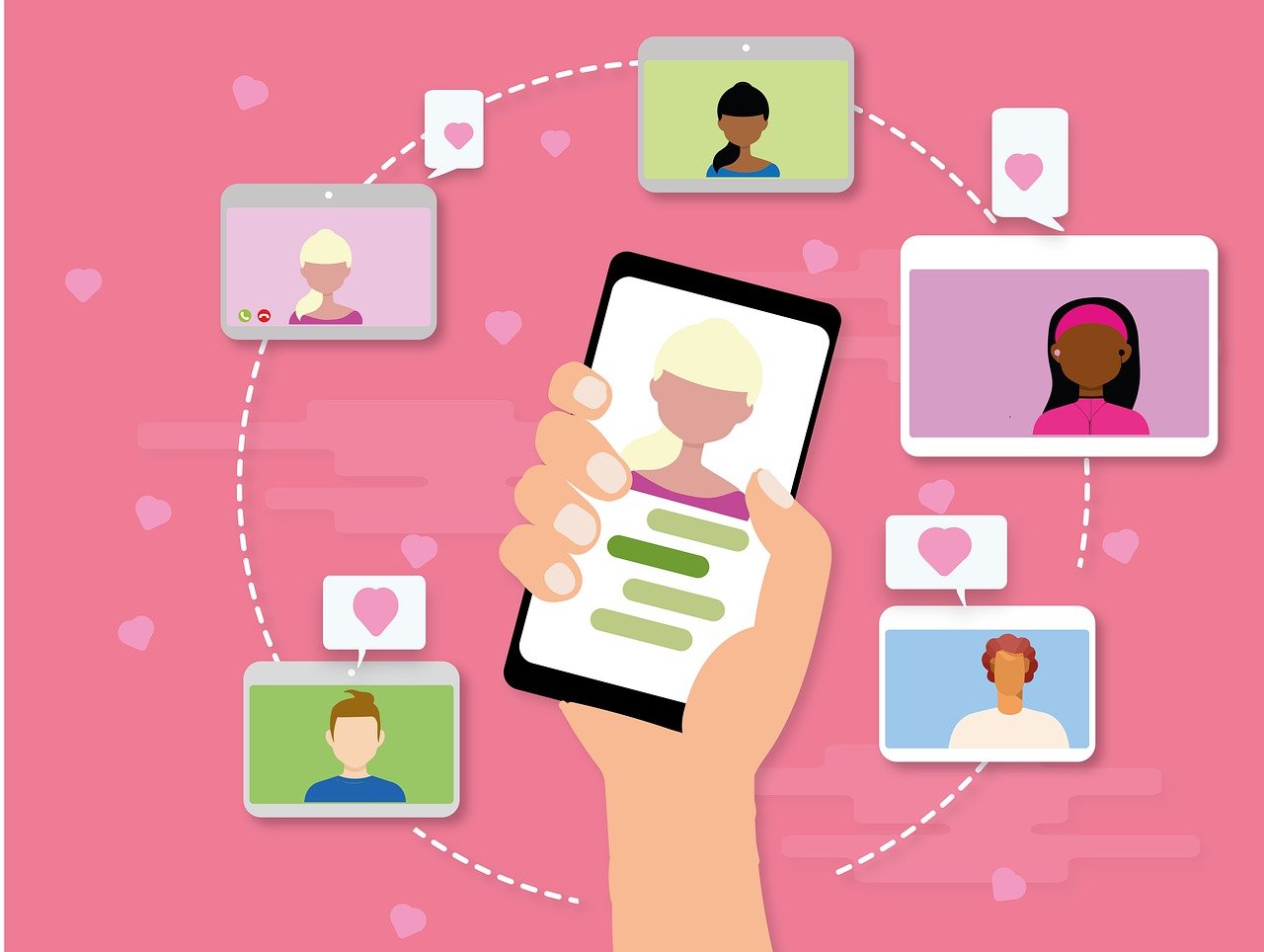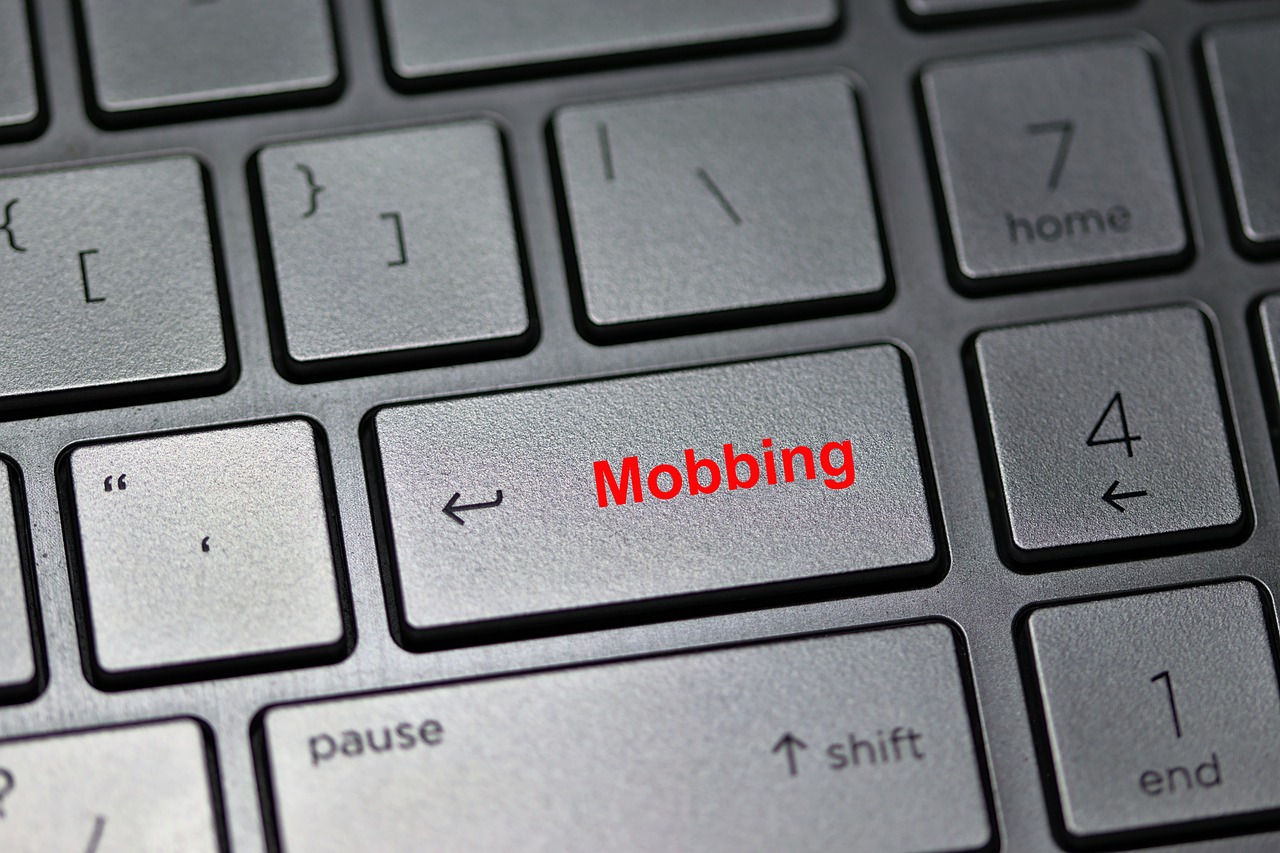How Vulnerable Are You To Social Media Hacks?
In today’s digital age, social media has become a vital part of our lives. We share everything from our daily activities to our deepest thoughts, making our online presence richer than ever. However, this openness also makes us incredibly vulnerable to social media hacks. Have you ever stopped to think about how much personal information you share online? A single post can reveal your location, your interests, and even your contact information. Hackers are always lurking, waiting for the perfect opportunity to exploit this data. The question is, how vulnerable are you really?
Social media hacks can take many forms, from account takeovers to data breaches. These intrusions can lead to identity theft, financial loss, and a host of other issues that can disrupt your life. Imagine waking up one day to find that your account has been compromised, and all your personal information is now in the hands of a stranger. It’s a nightmare scenario that is becoming all too common. The reality is that anyone can be a target, and understanding the risks is the first step in protecting yourself.
So, what makes social media accounts so appealing to hackers? For starters, many users employ weak passwords or reuse the same password across multiple platforms. This creates a domino effect; once a hacker gains access to one account, they can easily infiltrate others. Additionally, many people do not enable security features like two-factor authentication, which adds an extra layer of protection. By neglecting these basic security measures, users are essentially rolling out the red carpet for cybercriminals.
To put this into perspective, consider the following statistics:
| Statistic | Percentage |
|---|---|
| Users who have experienced a hack | 30% |
| Users who reuse passwords | 60% |
| Accounts with two-factor authentication enabled | 20% |
These numbers are alarming, and they highlight the need for increased awareness and proactive measures. So, how can you determine your vulnerability? Start by asking yourself a few questions:
- Do you use the same password for multiple accounts?
- Have you enabled two-factor authentication on your accounts?
- Are you cautious about the information you share publicly?
By reflecting on these questions, you can gauge your level of vulnerability and take steps to improve your online security. Remember, being proactive is far better than being reactive. Don’t wait until you’re a victim of a hack to start taking your security seriously.
Q: What should I do if I think my account has been hacked?
A: Immediately change your password and enable two-factor authentication. Also, notify the social media platform about the breach.
Q: How can I create a strong password?
A: Use a mix of uppercase and lowercase letters, numbers, and special characters. Avoid using easily guessable information like birthdays or names.
Q: Is two-factor authentication really necessary?
A: Absolutely! It adds an extra layer of security that can make it significantly harder for hackers to access your account.
Q: Can I recover a hacked account?
A: Yes, most social media platforms have recovery options. Follow their guidelines to regain access to your account.

Understanding Social Media Hacks
Social media has become an integral part of our lives, enabling us to connect, share, and communicate with friends and family across the globe. However, with this convenience comes a significant risk: the threat of social media hacks. Social media hacks refer to unauthorized access to user accounts, often leading to severe consequences such as data breaches, identity theft, and even financial loss. It's essential to grasp the nature of these hacks, as understanding the risks involved is the first step toward safeguarding your personal information and maintaining your online security.
The digital landscape is constantly evolving, and so are the tactics employed by cybercriminals. Hackers are becoming increasingly sophisticated, using various methods to exploit vulnerabilities in social media platforms. For instance, they might target weak passwords, take advantage of outdated security settings, or use deceptive tactics to trick users into revealing sensitive information. The consequences of these hacks can be devastating, as they can lead to unauthorized access to personal data, which can be sold on the dark web or used for malicious purposes.
To better understand the implications of social media hacks, let's consider a few alarming statistics:
| Statistic | Value |
|---|---|
| Percentage of users who have experienced a hack | 64% |
| Number of social media accounts compromised daily | 1.9 million |
| Estimated financial loss due to social media hacks annually | $3 billion |
These numbers are staggering, and they highlight the urgency of taking action to protect your online presence. When a hacker gains access to your social media account, they can impersonate you, send malicious messages to your contacts, and even access sensitive information linked to your account. This can lead to a cascade of issues that may affect not only you but also your friends and family, making it crucial to stay informed about the various tactics hackers use.
In conclusion, understanding social media hacks is vital for anyone who engages with these platforms. By being aware of the risks and the methods hackers employ, you can take proactive steps to protect your online identity. Remember, the digital world is like a vast ocean; while it offers plenty of opportunities to explore, it also harbors hidden dangers that can catch you off guard. Stay vigilant, educate yourself, and make informed choices to navigate this landscape safely.

Common Tactics Used by Hackers
When it comes to social media hacks, hackers are like cunning magicians, pulling tricks out of their hats that leave users bewildered and vulnerable. Understanding the common tactics they employ is essential for anyone who wants to protect their online presence. These tactics often involve a mix of psychological manipulation and technical know-how, making them particularly dangerous. Let's dive deeper into the most prevalent methods hackers use to infiltrate social media accounts.
One of the most notorious tactics is phishing. This is where hackers cast their nets wide, sending deceptive emails or messages that appear to come from legitimate sources. Imagine receiving an email that looks just like it’s from your favorite social media platform, asking you to click a link to verify your account. Sounds harmless, right? But in reality, that link could lead you to a fake website designed to steal your login credentials. Recognizing these scams is crucial. Users should always be on the lookout for unusual requests for personal information or links that seem off.
Phishing scams have become increasingly sophisticated, often using social engineering techniques to make their messages seem more credible. For instance, a hacker might reference recent activity on your account or use information they’ve gathered from other sources to create a sense of urgency. This manipulation can lead to a moment of panic where you might divulge information without thinking twice. Being aware of these tactics can significantly reduce your risk of falling victim to such scams.
So, how can you identify these phishing attempts? It boils down to a few key indicators. First, always scrutinize the sender's email address. Often, phishing emails come from addresses that look similar but are slightly off. Second, be wary of suspicious links. Hover over any link before clicking to see where it truly leads. If it doesn’t match the official website, back away! Lastly, if you receive unexpected requests for personal information, treat them with skepticism. A legitimate company will never ask for sensitive information through email.
If you encounter a phishing scam, don’t just brush it off. Reporting these scams to social media platforms can help protect others. Most platforms have a straightforward process for reporting suspicious messages. By taking a few minutes to report these scams, you contribute to a safer online environment for everyone. Remember, every little action counts!
Another common tactic is social engineering, where hackers manipulate individuals into revealing confidential information. This can be as simple as a phone call where someone pretends to be a tech support agent, or it can involve more elaborate schemes like impersonating a friend in distress. The essence of social engineering lies in exploiting human psychology—creating a scenario that encourages the target to let their guard down. Recognizing these tactics can empower you to safeguard your accounts against unauthorized access. Always think twice before sharing personal information, even if the request seems legitimate.
In conclusion, being aware of these common tactics used by hackers is the first step in fortifying your social media defenses. By staying informed and vigilant, you can significantly reduce your risk of falling prey to these cunning schemes. Always remember, in the digital world, knowledge is your best armor!
- What should I do if I think my account has been hacked?
If you suspect your account has been compromised, change your password immediately and enable two-factor authentication. Report the incident to the social media platform. - How can I recognize a phishing email?
Look for unusual sender addresses, poor grammar, and unexpected requests for personal information. Always verify links before clicking. - What is two-factor authentication?
Two-factor authentication (2FA) adds an extra layer of security by requiring a second form of verification in addition to your password.

Phishing Scams
This article explores the various risks associated with social media hacks, the tactics used by hackers, and how to protect your online presence from potential threats.
Social media hacks refer to unauthorized access to accounts, often leading to data breaches. Understanding the nature of these hacks is crucial for protecting personal information and maintaining online security.
Hackers employ various tactics, such as phishing and social engineering, to gain access to accounts. Recognizing these methods is essential for users to defend against potential attacks.
Phishing scams are a prevalent threat in the digital landscape, designed to deceive users into revealing sensitive information such as passwords, credit card numbers, and social security details. These scams often come in the form of emails or messages that appear to be from legitimate sources, such as banks or social media platforms. The essence of phishing lies in its deceptive nature; it exploits human psychology rather than technical vulnerabilities. Imagine receiving an email that looks like it’s from your bank, urging you to verify your account information. It’s easy to panic and comply, but that’s exactly what the scammers want!
To better understand phishing scams, consider the following characteristics:
- Urgency: Many phishing messages create a false sense of urgency, prompting users to act quickly without thinking.
- Generic Greetings: Phishing attempts often use generic salutations like "Dear Customer" instead of your name.
- Suspicious Links: Hovering over a link may reveal a URL that looks suspicious or unrelated to the supposed sender.
Awareness of these characteristics can significantly reduce the risk of falling victim to phishing scams. The key is to remain vigilant and always question the authenticity of unexpected communications.
Identifying phishing attempts requires a critical evaluation of messages. Users should look for suspicious links and unexpected requests for personal information to avoid scams. For instance, if you receive an email asking for your login credentials, take a moment to verify the sender's email address. Often, phishing emails come from addresses that look similar but contain slight variations. Trust your instincts; if something feels off, it probably is!
Reporting phishing scams to social media platforms helps protect others. Users can inform providers about suspicious messages, contributing to a safer online environment. Most social media platforms have a dedicated process for reporting phishing attempts, and taking this step not only aids in your protection but also helps to shield fellow users from potential harm. Remember, your vigilance can be the difference between safety and a significant breach of personal information.
Social engineering techniques manipulate individuals into divulging confidential information. Recognizing these tactics can empower users to safeguard their accounts against unauthorized access.
Implementing security measures is vital for protecting social media accounts. Users should adopt best practices to enhance their online safety and minimize vulnerabilities.
Using strong, unique passwords for each account is crucial. Password managers can help users create and store complex passwords securely, reducing the risk of hacks.
Enabling two-factor authentication (2FA) adds an extra layer of security. This method requires a secondary verification step, making unauthorized access significantly more difficult for hackers.
Q: What is phishing?
A: Phishing is a cyber attack that tricks individuals into revealing sensitive information by masquerading as a trustworthy entity in electronic communication.
Q: How can I recognize a phishing email?
A: Look for generic greetings, urgent requests, and suspicious links. Always verify the sender's email address.
Q: What should I do if I receive a phishing email?
A: Do not click on any links or provide any information. Report the email to your email provider and the organization being impersonated.
Q: Is two-factor authentication really necessary?
A: Yes! 2FA adds an essential layer of security that can significantly reduce the chances of unauthorized access to your accounts.

Identifying Phishing Attempts
Identifying phishing attempts can feel like navigating a maze filled with traps, but with a keen eye and some basic knowledge, you can emerge unscathed. Phishing scams often masquerade as legitimate communications, making it crucial to scrutinize every email or message that lands in your inbox. One of the first signs of a phishing attempt is a generic greeting. If the message starts with "Dear Customer" instead of your name, it’s a red flag. Legitimate companies usually address you by your name, as they have your details on file.
Another common tactic is the use of urgency. Phishing messages often create a sense of panic, urging you to act quickly to avoid negative consequences. For instance, you might receive a message claiming that your account will be suspended unless you verify your information within 24 hours. This pressure can cloud your judgment, leading you to click on suspicious links without thinking twice. Always take a moment to breathe and assess the situation before clicking anything!
Moreover, be wary of unexpected attachments or links. If you receive a message with an attachment that you weren’t expecting, or a link that seems out of place, it’s best to avoid interacting with it. Hackers often use malicious software hidden in these attachments to gain access to your personal information. If you’re unsure about a link, hover over it with your mouse (without clicking!) to see the URL it directs to. If the link looks suspicious or doesn’t match the sender’s website, it’s better to delete the message.
To help you further identify phishing attempts, here’s a quick reference table summarizing key indicators:
| Indicator | Description |
|---|---|
| Generic Greetings | Messages that do not address you by name. |
| Sense of Urgency | Pressure to act immediately to avoid negative consequences. |
| Unexpected Attachments | Attachments that you did not anticipate receiving. |
| Suspicious Links | Links that do not match the sender's legitimate website. |
Lastly, always remember to trust your instincts. If something feels off, it probably is. Taking the time to verify the source of a message can save you from a potential disaster. You can do this by contacting the company directly through their official website or customer service number. Stay vigilant and keep your online presence secure!
- What should I do if I suspect a phishing attempt? If you think you've encountered a phishing attempt, do not click any links or download attachments. Report it to your email provider and the company being impersonated.
- Can I recover my account if I fall for a phishing scam? It depends on the situation. Quickly changing your password and contacting the service provider can help you regain control of your account.
- How can I protect myself from phishing attacks? Staying informed about common tactics, using strong passwords, and enabling two-factor authentication can significantly reduce your risk.

Reporting Phishing Scams
When it comes to the digital world, vigilance is your best friend. If you encounter a phishing scam, it's not just about protecting yourself; it's about contributing to a safer online community. Reporting these scams can help social media platforms identify and eliminate malicious actors, thereby reducing the risk for everyone. So, what should you do if you find yourself on the receiving end of a phishing attempt? First, take a deep breath. It’s easy to panic, but staying calm helps you think clearly.
Most social media platforms have a straightforward process for reporting suspicious messages or accounts. Here’s a quick rundown of steps you can take:
- Document the Evidence: Before you report, take screenshots of the phishing message or email. This evidence is crucial for the platform’s investigation.
- Navigate to the Reporting Section: Each platform has a designated area for reporting spam or phishing. Familiarize yourself with it; it could be a lifesaver.
- Follow the Instructions: Ensure you provide all necessary information when filling out the report. The more details you provide, the better equipped the platform will be to take action.
- Stay Informed: After reporting, keep an eye on the situation. Platforms may reach out for more information or to inform you of their findings.
Moreover, it’s not just about reporting to social media platforms. You should also consider notifying your email provider if the phishing attempt came through an email. They often have their own reporting systems in place and can take additional measures to prevent similar scams from reaching other users. By doing this, you're not only protecting yourself but also helping to create a safer online environment for everyone.
In addition to reporting, it’s beneficial to share your experience with friends and family. This can spark conversations about online safety and make others more aware of the tactics used by scammers. Remember, knowledge is power! The more people know about phishing scams, the harder it becomes for hackers to succeed.
Finally, don't forget to check for updates from the social media platforms regarding your report. They often post about ongoing threats and how to avoid them, which can be an excellent resource for staying informed and protected. Your proactive approach in reporting phishing scams not only helps you but also plays a significant role in the collective effort to combat online fraud.
Q: What should I do if I accidentally clicked on a phishing link?
A: If you clicked on a phishing link, immediately change your password for that account and enable two-factor authentication if you haven't done so already. Monitor your account for any suspicious activity and consider running a security scan on your device.
Q: How can I tell if an email is a phishing attempt?
A: Look for signs such as poor grammar, generic greetings, and unexpected requests for personal information. If the email seems suspicious, do not click on any links or download attachments.
Q: Can I report phishing scams anonymously?
A: Yes, most platforms allow you to report phishing scams without revealing your identity. Your focus should be on providing as much information as possible for the investigation.
Q: What happens after I report a phishing scam?
A: After you report it, the social media platform will review your report and take appropriate action. This could include banning the offending account or implementing additional security measures.

Social Engineering Techniques
When it comes to online security, one of the most insidious threats is social engineering. This term refers to a range of tactics that hackers use to manipulate individuals into divulging confidential information. Imagine a con artist who charms their way into a bank, convincing the teller that they are a legitimate customer. In the digital world, social engineers employ similar tactics, but they do it through screens and keyboards. They rely on psychological tricks rather than technical skills to achieve their goals.
There are several common social engineering techniques that you should be aware of. For instance, pretexting involves creating a fabricated scenario to steal your personal information. A hacker might pose as a tech support representative and claim they need your password to resolve an issue. Another tactic is baiting, where an attacker offers something enticing, like free software, to lure you into providing sensitive data. The key here is that these hackers are not just after your passwords; they want to exploit your trust.
One particularly alarming method is tailgating, where an unauthorized person gains physical access to a restricted area by following an authorized individual. While this technique is more common in physical spaces, its digital counterpart exists as well. For example, a hacker might send a seemingly harmless link in an email, tricking you into clicking it and unknowingly giving them access to your account.
It's essential to recognize these tactics, as awareness is your first line of defense. Here are some red flags to watch out for:
- Urgency: If someone pressures you to act quickly, it might be a scam.
- Unusual Requests: Be cautious of unexpected requests for personal information.
- Suspicious Links: Always verify links before clicking on them.
By understanding how social engineers operate, you can better safeguard your accounts. Always question the motives behind requests for your information, and remember that it's okay to say no. When in doubt, reach out to the company or individual directly using verified contact information, rather than responding to the suspicious request.
In conclusion, social engineering is a pervasive threat that exploits human psychology rather than technological vulnerabilities. By staying informed and vigilant, you can protect yourself from these manipulative tactics and secure your online presence.
Q1: What is social engineering?
A1: Social engineering is a tactic used by hackers to manipulate individuals into revealing confidential information, often through psychological tricks.
Q2: How can I identify social engineering attempts?
A2: Look for urgency, unusual requests for personal information, and suspicious links. Always verify the source before providing any information.
Q3: What should I do if I suspect a social engineering attack?
A3: If you suspect an attack, do not engage with the request. Verify the information through official channels and report the incident to the relevant authorities or platforms.

Protecting Your Social Media Accounts
In today's digital age, protecting your social media accounts is more critical than ever. With the rise in cyber threats, it’s like living in a neighborhood where the doors are always unlocked—inviting trouble. So, how can you fortify your online presence and keep those pesky hackers at bay? The answer lies in implementing a few essential security measures that can significantly reduce your vulnerability.
First and foremost, one of the simplest yet most effective strategies is to use strong passwords. Think of your password as the key to your digital home; the stronger it is, the harder it is for intruders to break in. A strong password typically includes a mix of uppercase and lowercase letters, numbers, and special characters. You might even consider using a passphrase—a series of words that create a memorable sentence. For instance, instead of "Password123!", try something like "MyDogLovesToBark@3AM!" This approach not only enhances security but also makes it easier for you to remember. If juggling multiple passwords feels overwhelming, you might want to invest in a password manager. These handy tools can generate and store complex passwords for you, ensuring you never have to use the same password across different platforms.
Another crucial step is enabling two-factor authentication (2FA). Imagine having a two-lock system on your front door; even if someone has the key, they still can’t get in without the second lock. That’s precisely what 2FA does for your social media accounts. By requiring a secondary verification step, such as a code sent to your mobile device, it adds an extra layer of security. This means that even if a hacker manages to steal your password, they won’t be able to access your account without that additional verification. Most social media platforms offer this feature, and enabling it should be a top priority for anyone looking to enhance their account security.
In addition to these measures, it’s also important to regularly review your account settings and privacy options. Social media platforms often update their features, and staying informed about these changes can help you control who sees your information. Take a moment to check your friend list, review your privacy settings, and remove any apps or connections that you no longer use or trust. It’s like cleaning out your closet—getting rid of things you don’t need can give you peace of mind and make it easier to find what’s important.
Lastly, be vigilant about recognizing suspicious activity. If you notice any unusual login attempts or receive alerts about changes to your account that you didn’t make, take immediate action. Change your password, enable 2FA if you haven’t already, and report any suspicious activity to the platform. Remember, your online safety is in your hands, and being proactive is the best defense against social media hacks.
- What should I do if my social media account gets hacked?
If you suspect that your account has been compromised, immediately change your password, enable two-factor authentication, and report the issue to the social media platform. - How often should I change my passwords?
It's a good practice to change your passwords every three to six months, especially for accounts with sensitive information. - Can I use the same password for multiple accounts?
No, using the same password across different accounts increases your risk. Always use unique passwords for different platforms. - What is the best way to create a strong password?
Combine uppercase and lowercase letters, numbers, and symbols. Consider using a passphrase for added security.

Strong Password Practices
This article explores the various risks associated with social media hacks, the tactics used by hackers, and how to protect your online presence from potential threats.
Social media hacks refer to unauthorized access to accounts, often leading to data breaches. Understanding the nature of these hacks is crucial for protecting personal information and maintaining online security.
Hackers employ various tactics, such as phishing and social engineering, to gain access to accounts. Recognizing these methods is essential for users to defend against potential attacks.
Phishing scams involve deceptive emails or messages that trick users into revealing personal information. Awareness of these scams can significantly reduce the risk of falling victim to them.
Identifying phishing attempts requires critical evaluation of messages. Users should look for suspicious links and unexpected requests for personal information to avoid scams.
Reporting phishing scams to social media platforms helps protect others. Users can inform providers about suspicious messages, contributing to a safer online environment.
Social engineering techniques manipulate individuals into divulging confidential information. Recognizing these tactics can empower users to safeguard their accounts against unauthorized access.
Implementing security measures is vital for protecting social media accounts. Users should adopt best practices to enhance their online safety and minimize vulnerabilities.
Using strong, unique passwords for each account is crucial in today’s digital landscape. Think of your password as the key to your digital house; if it’s weak, you’re inviting trouble right through your front door. A strong password typically combines uppercase letters, lowercase letters, numbers, and special characters, creating a complex barrier against unauthorized access. For instance, instead of using a simple password like “password123,” consider something more intricate like “S@fe&Secure2023!”.
Moreover, it’s essential to avoid using the same password across multiple platforms. If one account gets compromised, it could lead to a domino effect, allowing hackers to access your other accounts as well. A good practice is to use a password manager. These handy tools can generate and store complex passwords securely, so you don’t have to remember each one individually. It’s like having a vault for your digital keys!
In addition to creating strong passwords, regularly changing your passwords is a smart move. Aim to update them every three to six months, and always change them immediately if you suspect any suspicious activity. To help you visualize the importance of strong passwords, here’s a simple comparison:
| Password Type | Strength | Example |
|---|---|---|
| Weak | Easy to guess | 123456 |
| Moderate | Somewhat secure | Password2023 |
| Strong | Highly secure | G@t3K3y!2023# |
By following these strong password practices, you’re not just protecting your accounts; you’re creating a fortress around your personal information. Remember, the effort you put into securing your passwords today can save you from potential headaches and losses tomorrow.
- What is a strong password? A strong password is at least 12 characters long and includes a mix of uppercase letters, lowercase letters, numbers, and special symbols.
- How often should I change my passwords? It's advisable to change your passwords every three to six months or immediately if you suspect any suspicious activity.
- What is a password manager? A password manager is a software application that helps you generate, store, and manage your passwords securely.
- Should I use the same password for all my accounts? No, using the same password across multiple accounts increases your vulnerability. Each account should have a unique password.

Two-Factor Authentication
In today's digital landscape, where social media hacks are alarmingly common, Two-Factor Authentication (2FA) has emerged as a powerful shield against unauthorized access to your accounts. Imagine locking your front door and then adding a deadbolt for extra security—this is essentially what 2FA does for your online presence. By requiring not just a password but also an additional verification method, it significantly increases the difficulty for hackers attempting to breach your account.
When you enable 2FA, you typically need to provide two forms of identification before gaining access. The first is your usual password, which, while essential, can sometimes be compromised. The second factor could be a text message sent to your phone, an email, or even a biometric scan like a fingerprint or facial recognition. This two-step process acts as a formidable barrier that can thwart even the most determined cybercriminals.
To illustrate the effectiveness of 2FA, consider this: a study conducted by Google revealed that 2FA can block up to 99.9% of automated attacks. That’s a staggering statistic! This means that even if a hacker manages to steal your password, they would still need that second piece of information, which is often in your possession alone. So, how do you set it up? Here’s a quick rundown:
- Go to the security settings of your social media account.
- Look for the option labeled "Two-Factor Authentication" or "2-Step Verification."
- Choose your preferred verification method (text, email, or authenticator app).
- Follow the prompts to complete the setup.
While 2FA is a robust security measure, it’s not foolproof. Hackers are constantly evolving their tactics, so it's essential to stay vigilant. For instance, be cautious of SIM swapping, where a hacker tricks your mobile carrier into transferring your phone number to their device. With your number in their hands, they can intercept your 2FA codes. To combat this, consider using an authenticator app instead of SMS for your second factor, as it's less susceptible to such attacks.
Moreover, it’s crucial to remember that while 2FA adds an extra layer of protection, it should be part of a broader security strategy. Combining it with strong, unique passwords and regular account monitoring can create a robust defense against social media hacks. So, why wait? Take the leap today and enable Two-Factor Authentication on all your accounts. Your future self will thank you!
- What is Two-Factor Authentication?
Two-Factor Authentication is a security process that requires two different forms of identification to access an account. - How does Two-Factor Authentication work?
2FA typically requires a password and a second factor, such as a code sent to your phone or generated by an app. - Is Two-Factor Authentication necessary?
While not mandatory, it is highly recommended as it significantly enhances your account security. - Can I use Two-Factor Authentication on all social media platforms?
Most major social media platforms offer 2FA as an option, but you should check the specific settings for each account.
Frequently Asked Questions
-
What are social media hacks?
Social media hacks refer to unauthorized access to social media accounts, which can lead to data breaches and the theft of personal information. Hackers use various methods to exploit vulnerabilities in user accounts, making it essential for users to understand these risks.
-
How do hackers gain access to social media accounts?
Hackers often use tactics like phishing scams and social engineering to trick users into revealing their login credentials. They may send deceptive emails or messages that appear legitimate, prompting users to provide personal information or click on malicious links.
-
What is phishing, and how can I identify it?
Phishing is a technique used by hackers to deceive individuals into sharing sensitive information by pretending to be a trustworthy source. To identify phishing attempts, look for suspicious links, poor grammar, and unexpected requests for personal information in emails or messages.
-
What should I do if I receive a phishing email?
If you receive a phishing email, do not click on any links or provide any personal information. Instead, report the email to your email provider and the social media platform it references to help protect others from falling victim to the scam.
-
What is social engineering, and how does it work?
Social engineering is a manipulation tactic used by hackers to trick individuals into divulging confidential information. This can involve impersonating a trusted contact or creating a sense of urgency to pressure the victim into acting quickly without thinking critically.
-
How can I protect my social media accounts?
To protect your social media accounts, use strong, unique passwords for each account, enable two-factor authentication (2FA), and be cautious of suspicious messages. Regularly updating your passwords and monitoring your accounts for unusual activity can also enhance your security.
-
What are strong password practices?
Strong password practices include using a combination of uppercase and lowercase letters, numbers, and special characters. Avoid using easily guessable information like birthdays or common words. Consider using a password manager to generate and store complex passwords securely.
-
What is two-factor authentication (2FA)?
Two-factor authentication (2FA) is a security method that requires two forms of verification before granting access to an account. This typically involves something you know (your password) and something you have (a code sent to your phone), making it much harder for hackers to gain unauthorized access.



















